|
I call this old-fashioned baked applesauce custard because while it's not from a historic recipe, it does hearken back to several styles of historic recipes. Its antecedents are:
Apples plus dairy seem to be a recurring theme, and while apple crisp with ice cream and apple pie with whipped cream are a delight, I wanted to try something a little different. Enter, baked apple custard. As you may have noticed, I've been on an apple kick lately, and this custard just doesn't disappoint. I had most of a quart jar of homemade applesauce in my fridge that needed using up as I hadn't canned it, and it had been made over a week ago. If you leave applesauce in the fridge long enough, it will start to ferment! And I didn't want that work to go to waste. I also felt like cooking something a bit more dessert-y than just eating plain applesauce with a little maple syrup or cream. This recipe is a mash-up of two, mainly - an applesauce custard pie recipe, and crustless custards. It was an experiment that turned out eminently delightful. Old-Fashioned Baked Applesauce Custard RecipeThis recipe starts with a very simple applesauce recipe, although you can use unsweetened store-bought applesauce if you prefer. But I liked the chunky kind, like my mom used to make. Start with apples you like. Most modern dessert apples will not need sweetening. Peel them, quarter, and cut out the cores (I use a sharp paring knife to make a V-shape around the seeds, like my mom used to do). Slice them lengthwise into a pot and cook over medium-low heat, uncovered, stirring occasionally. If the apples seem dry, add two tablespoons of water to get them started. The bottom ones will cook into mush, and the ones closer to the top will stay firmer. If you prefer, you can mix cooking apples like McIntosh with a crisper apple like Honeycrisp or Gala to get the same result. I used a mixture of Gingergolds, Golden Supremes, and Winesaps - some of my favorite locally available apples. Once all the apples are fork-tender or sauce, et your applesauce cool fully, and you're ready to start the recipe. 2 eggs 1/3 cup sugar or maple syrup 1 tsp. cinnamon 1/4 teaspoon salt 2 tbsp. flour 1 cup milk 1 1/2 cups homemade, unsweetened applesauce Preheat the oven to 350 F. Grease a glass pie plate generously with butter, and flour it (sprinkle with flour and tap and rotate the pie plate to coat it with a thin layer of flour - discard any extra, or use it in the recipe). In a large bowl with a pouring spout, whisk the eggs, sugar, cinnamon, and salt together until well-combined. Add the flour and whisk well to prevent lumps. Then stir in milk and applesauce. Pour into the buttered and floured pie plate, and carefully place in the oven. Cook 30-40 minutes or until the center is set. The top will be sticky. Let it cool slightly and serve warm, or chill and serve cold. This recipe is easy to double, like I did, but the high applesauce ratio means it's very soft and delicious, but it won't cut up into a nice, neat pie slices (as you'll see below). Better to make it in a pretty oval baking dish and serve with a large spoon instead of in slices. It doesn't need it, but add some whipped cream if you're so inclined. Old-Fashioned Baked Applesauce Custard is simple and homey, creamy and delicious whether served warm or cold. It tastes of fall and childhood, and that particular poignant longing for a past or place you know never existed that seems so endemic to autumn. It's the perfect dish for that transition between fall and winter, when November gets misty and the blazing leaves turn brown, and the days get darker. Who needs the fuss of pie crust? It makes a perfect after-school snack, weekend breakfast, or comforting dessert after a long work day. It doesn't look like much, but you could gussie it up for Thanksgiving too, if you've a mind. And while it's almost certainly better with homemade sauce, it's probably pretty darned good with the store-bought kind, too. Happy eating, friends. The Food Historian blog is supported by patrons on Patreon! Patrons help keep blog posts like this one free and available to the public. Join us for awesome members-only content like free digitized cookbooks from my personal collection, e-newsletter, and even snail mail from time to time! Don't like Patreon? Leave a tip!
3 Comments
I don't remember when I first encountered "Indian pudding." Derived from the Colonial name for cornmeal - "Indian meal" - it's an iconic dish of New England, though it isn't often made anymore. Combining Indigenous foodways, European cooking techniques, and molasses, a ubiquitous sweetener made cheap by the brutal labor of enslaved Africans, Indian pudding reflected the kind of stick-to-your-ribs cooking common in the Colonial period when people ate less frequently and engaged in harder labor, and with less access to heating than they do today. The above advertisement by Sun-maid Raisins from 1918 is a good illustration of this. "Note How Plain Foods Become Enticing," the ad reads, showing how Indian Pudding could be spiced up with raisins, and then goes on to show just how inexpensive raisins were. Historically, raisins were rather expensive, and had to be stoned (remove the seeds) by hand, a labor-intensive step that continued until the early 20th century. By the time Sun-maid is advertising in 1918, you no longer had to stone raisins - they came seedless. Clearly Sun-maid was trying to convince people that raisins were a more economical purchase than previously believed. Also, the use of Indian Pudding to illustrate the "plain foods" shows how it was viewed by most Americans at that time - plain, cheap, and filling. Indian pudding also fit nicely into rationing suggestions to use less sugar, refined white flour, and fats. With its ingredients of cornmeal and molasses, Indian pudding fit the bill. I first ran across a recipe for Apple Indian Pudding when researching the history of the Farm Cadets in New York State. The article right next to it was about the establishment of the Farm Cadet Corps under the State Military Training commission. Published in the Buffalo Evening News on April 19, 1917, just two weeks after the United States entered the war, it was included as part of a column called "Lucy Lincoln's Talks" and was one of many recipes. Although the United States Food Administration was not yet formed and no rationing recommendations had been issued, President Wilson had been publicly discussing the role of food in the war effort. Throughout the First World War, the United States Food Administration and home economists hearkened back to the Colonial period for several reasons. First, it appealed to Americans' sense of patriotism. Following the American Civil War, Northern reformers made a concerted effort to re-unite the nation and define what it meant to be American. Thanks to the unconscious bias of white supremacy, that idea became closely connected to New England and the mythology around the Pilgrims and the founding of the nation (despite the fact that Spanish Florida, Virginia, parts of Canada, and even New York had been settled earlier). Second, hearkening back to the Colonial period allowed ration supporters to encourage the substitution of non-rationed food items like cornmeal and molasses which had deep Colonial roots, for rationed foods like refined white flour and refined white sugar, which were needed for the war effort. Third, these ingredients were often very inexpensive. By connecting them to the honored founders of the country, food reformers could convince middle and upper class people to eat what may have been previously only associated with the poor and working class, in the name of patriotism. Despite the lack of actual rationing recommendations at this point, the recipe for Apple Indian Pudding would have fit very nicely into the requirements. It used cornmeal, which saved wheat. It used molasses and apples for sweetener, which saved sugar. It used two quarts of milk, which would help use up the milk surplus and add protein. It was also extremely inexpensive and filling, which meant it had appeal for folks on a budget or with large families. The recipe does, however, call for 1/3 cup of butter, which would become one of the recommended ration items in just a few months. Apple Indian Pudding RecipeI have made Indian Pudding before for a talk, and it's lovelier than you'd think. Here's the original recipe: "Scald 2 quarts of milk in a double boiler. Sprinkle in 1 cup of Indian meal, stirring all the time, and cook 45 minutes, stirring frequently. Remove from the fire, add 1/3 cup of butter, 1 cup of molasses, 2 teaspoons of salt, 1/2 teaspoon each of ginger and grated nutmeg, and 1 quart of pared, cored, and quartered apples. Turn into a buttered baking dish and bake three hours in a slow oven." And here's a modern translation: 8 cups (or a half gallon) whole milk 1 cup cornmeal 1/3 cup butter 1 cup molasses 2 teaspoons salt 1/2 teaspoon ground ginger 1/2 teaspoon grated fresh nutmeg 3-4 apples Preheat the oven to 300 F. In a double boiler or heavy-bottomed pot, heat the milk, but do not boil. Once hot, slowly whisk in the cornmeal and cook, stirring frequently, for 30-45 mins or until the cornmeal is fully cooked and has absorbed the milk. Remove from heat and while hot, stir in the butter, molasses, salt, and spices. Peel, core, and slice the apples thickly. Stir the apple slices into the cornmeal mixture, and tip it all into a buttered glass or ceramic baking dish. Place in the oven and let bake for 3 hours, uncovered. Serve hot or warm plain (ration-friendly) or with vanilla ice cream or unsweetened liquid cream (not-so ration-friendly). Although the original recipe calls for quartered apples, most modern apples are very large, and a quarter might be too big, which is why I suggest slicing them instead. If you're in an area of the world that gets cold in the fall and winter, Apple Indian Pudding is the perfect, homey dessert to attempt on a day when you'll be puttering around the kitchen or the house all day. Pop some baked beans in with it if you really want a traditional New England supper (and a ration-friendly one!). It really does take three whole hours to bake (other versions included steaming like plum pudding), but the long, slow heat turns the normally crunchy cornmeal into melting softness. There's a reason why it's still so popular in New England. If you want to know more about the history of Indian Pudding, including how to make a historic recipe, check out my lecture below! The Food Historian blog is supported by patrons on Patreon! Patrons help keep blog posts like this one free and available to the public. Join us for awesome members-only content like free digitized cookbooks from my personal collection, e-newsletter, and even snail mail from time to time! Don't like Patreon? Leave a tip! |
AuthorSarah Wassberg Johnson has an MA in Public History from the University at Albany and studies early 20th century food history. Archives
July 2024
Categories
All
|
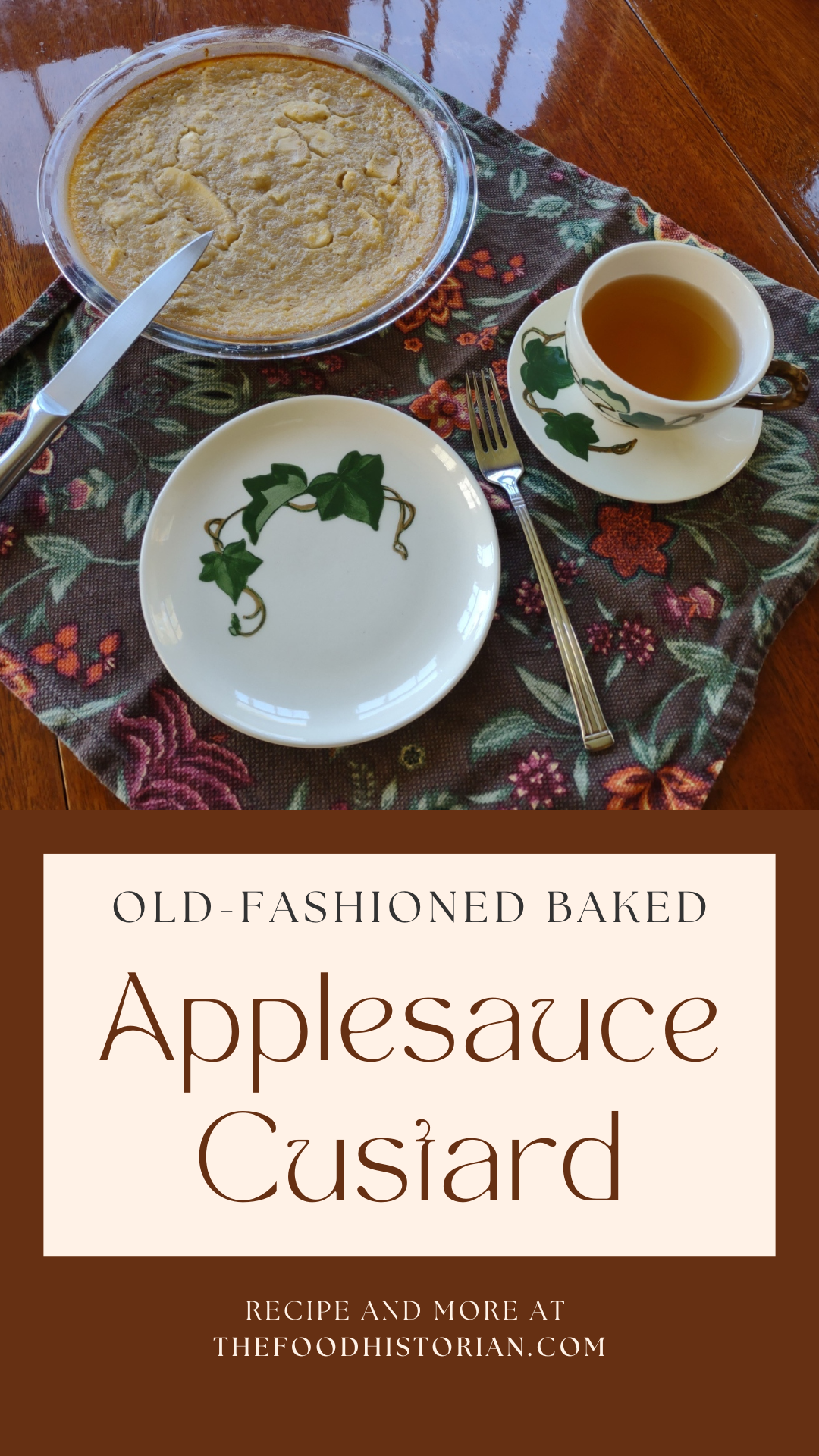
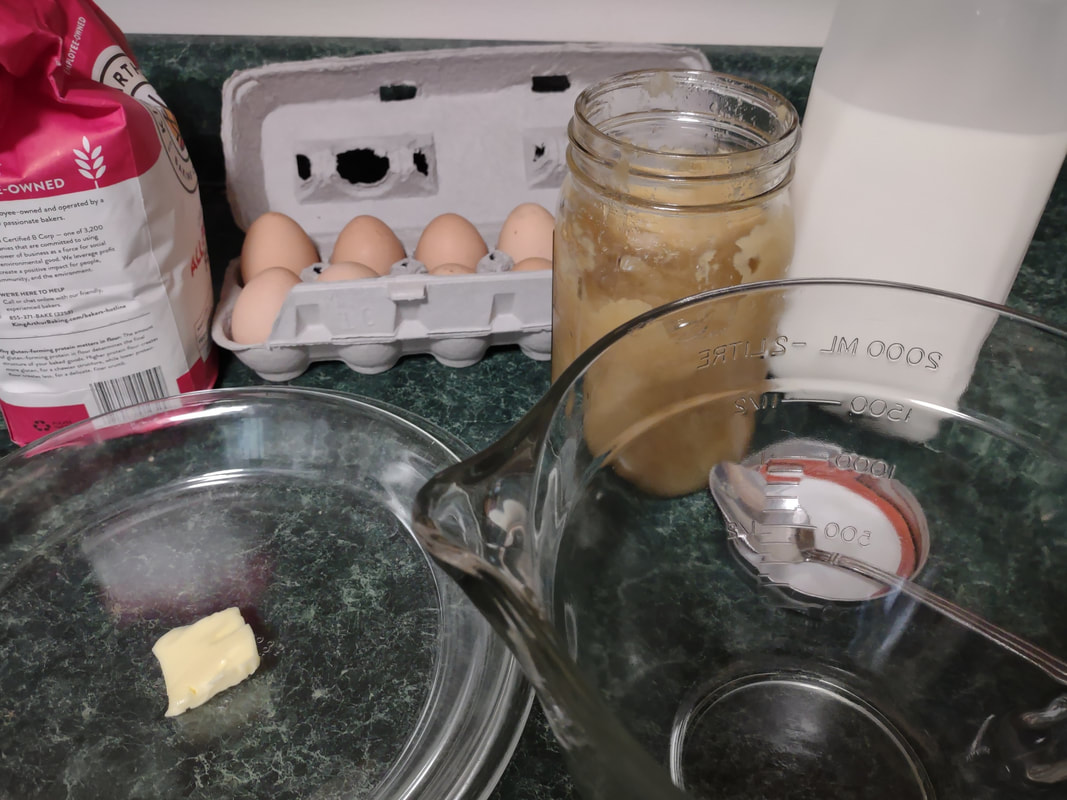
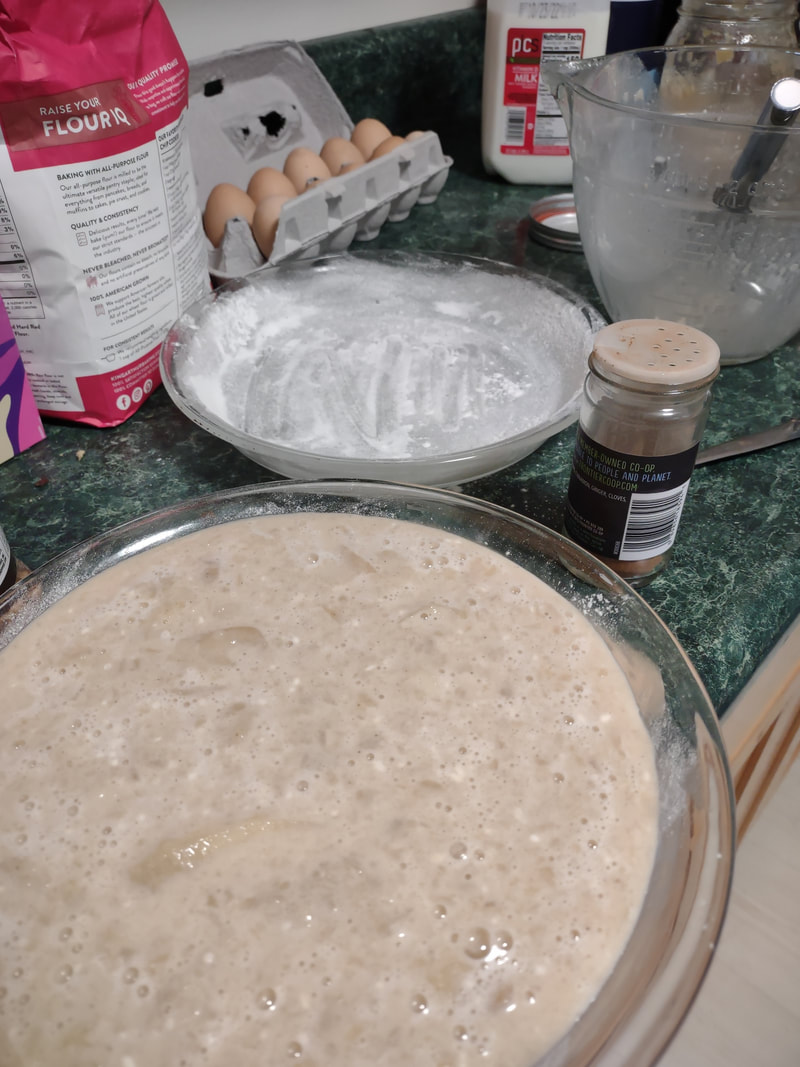
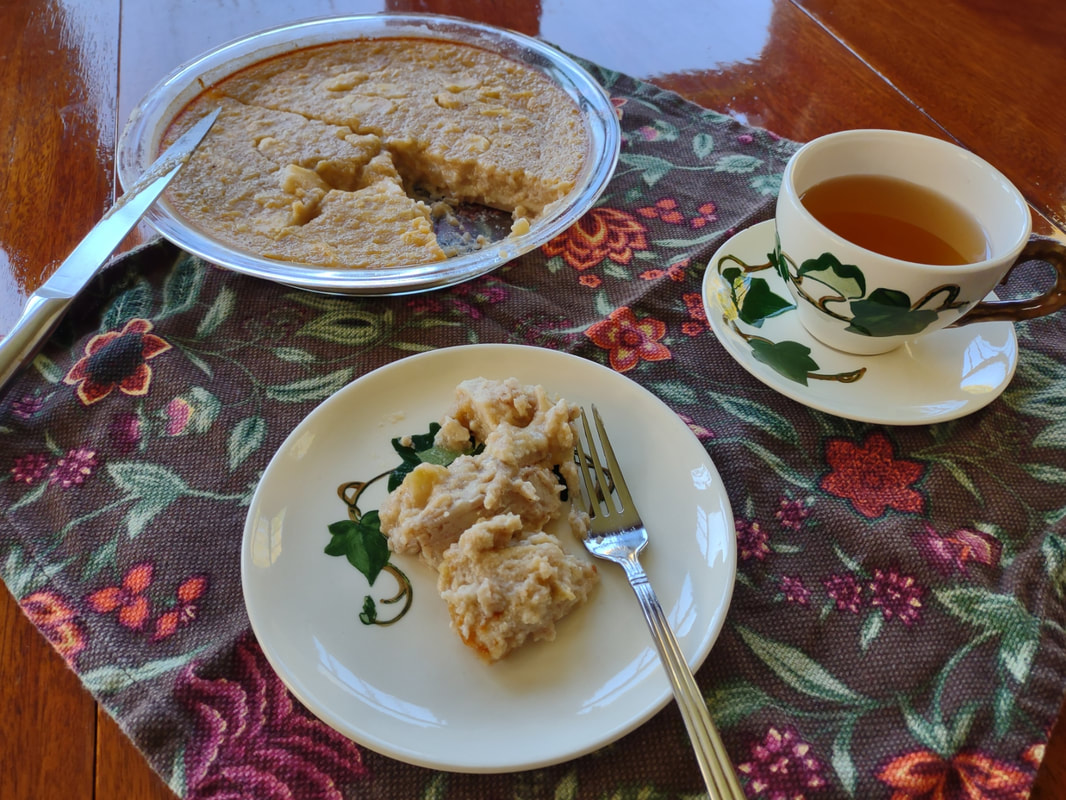

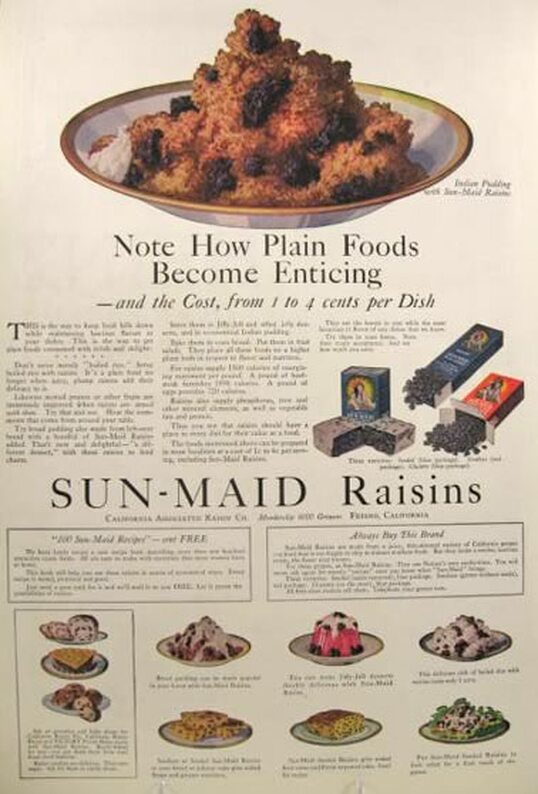
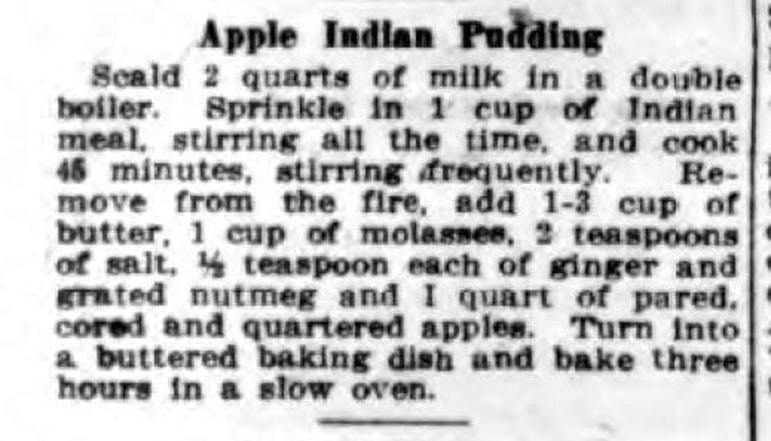

 RSS Feed
RSS Feed